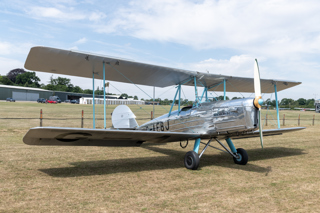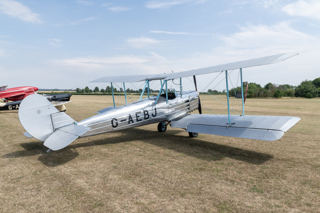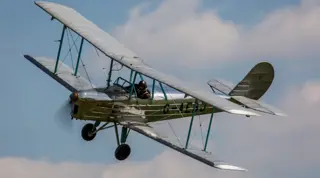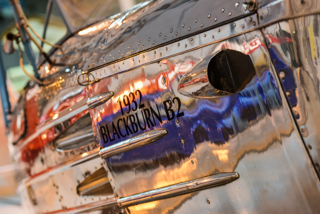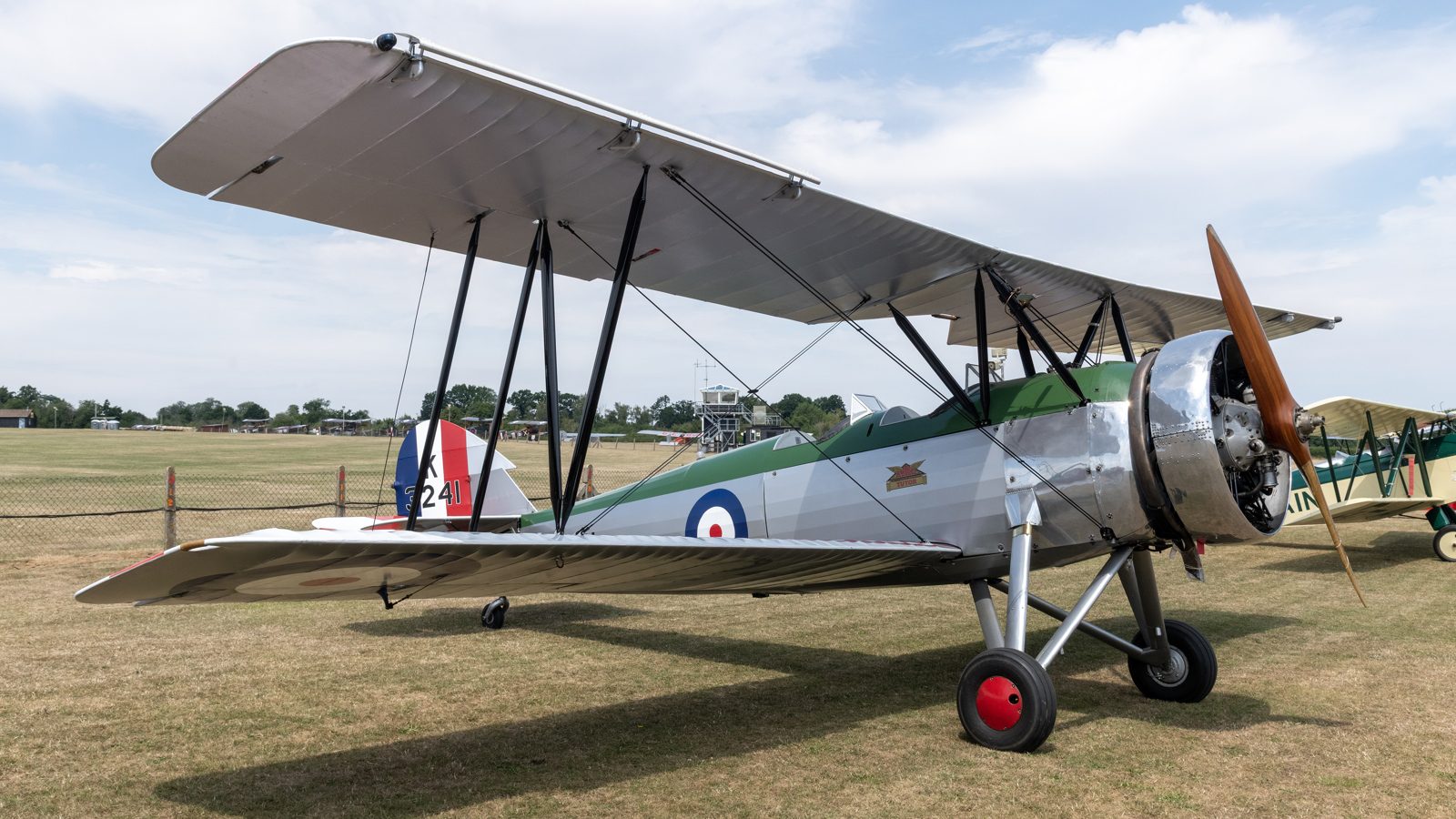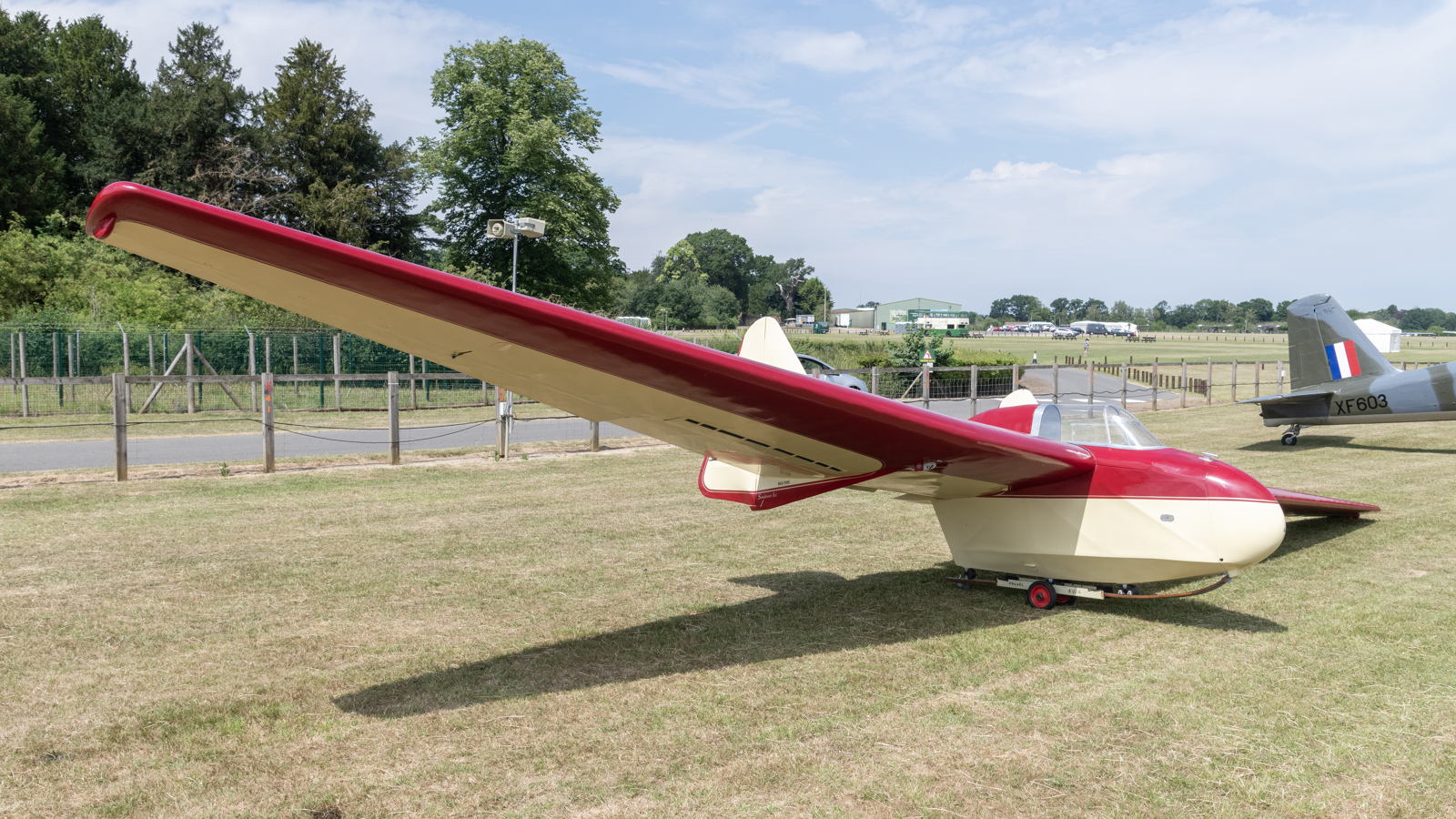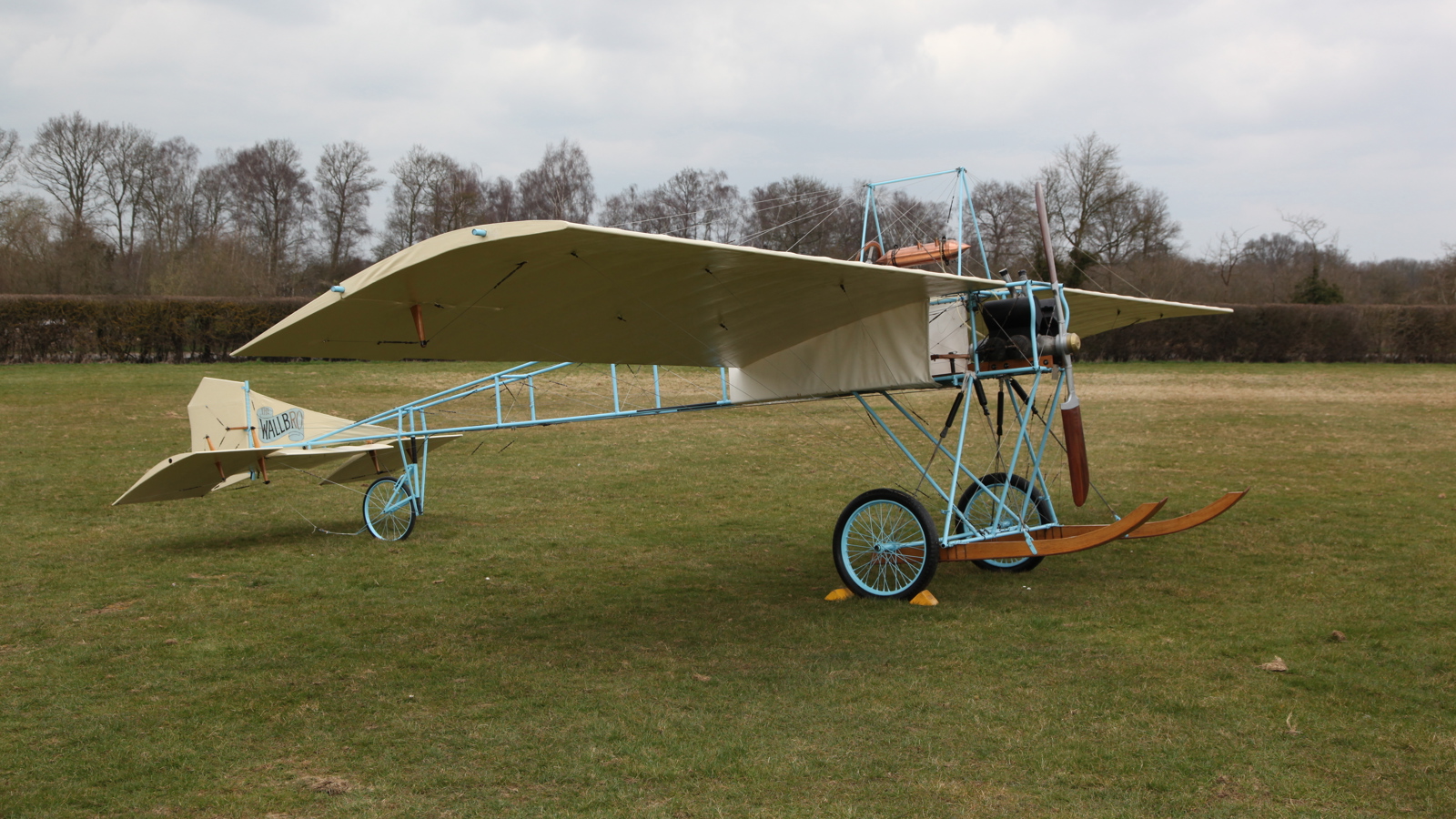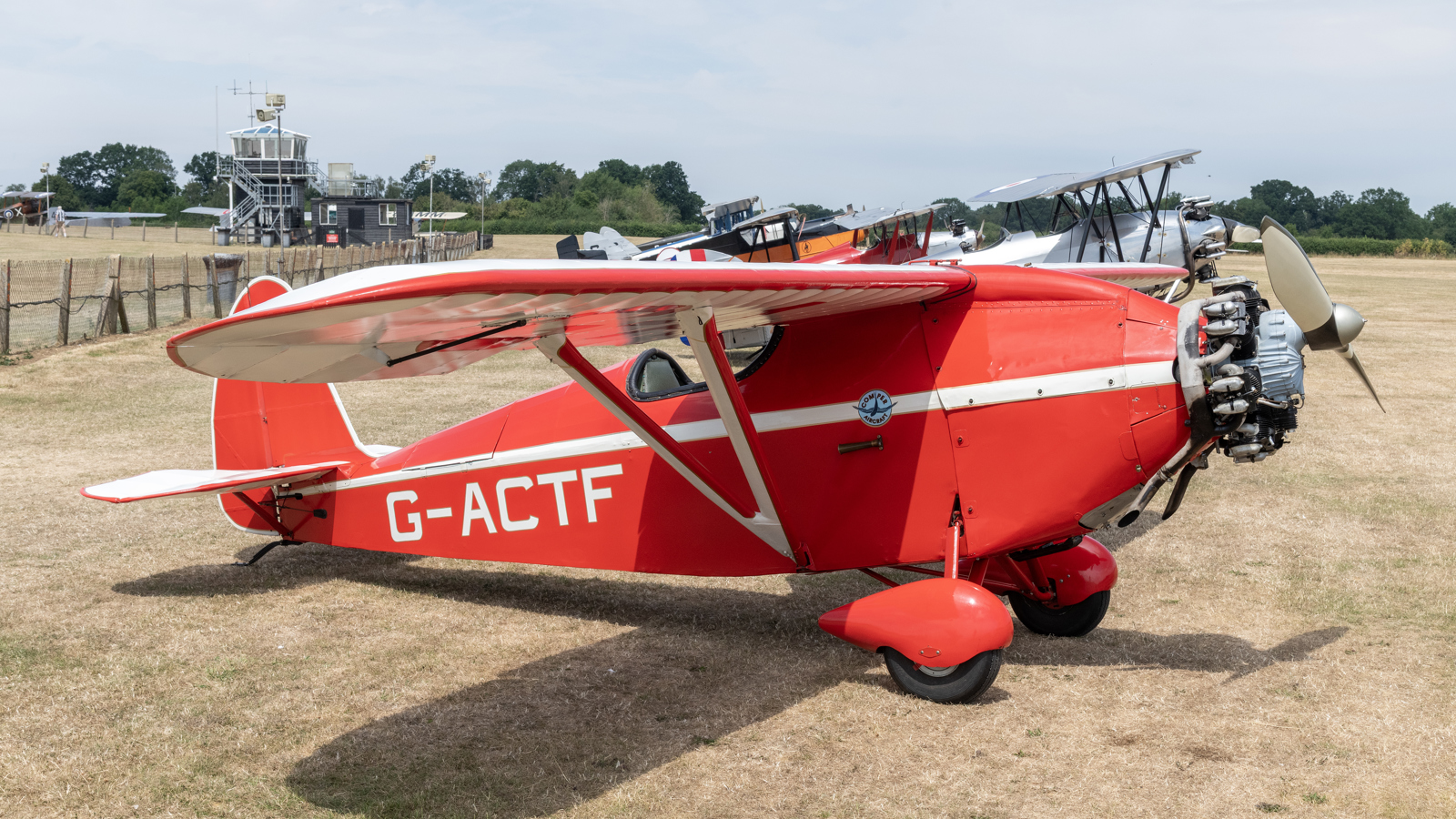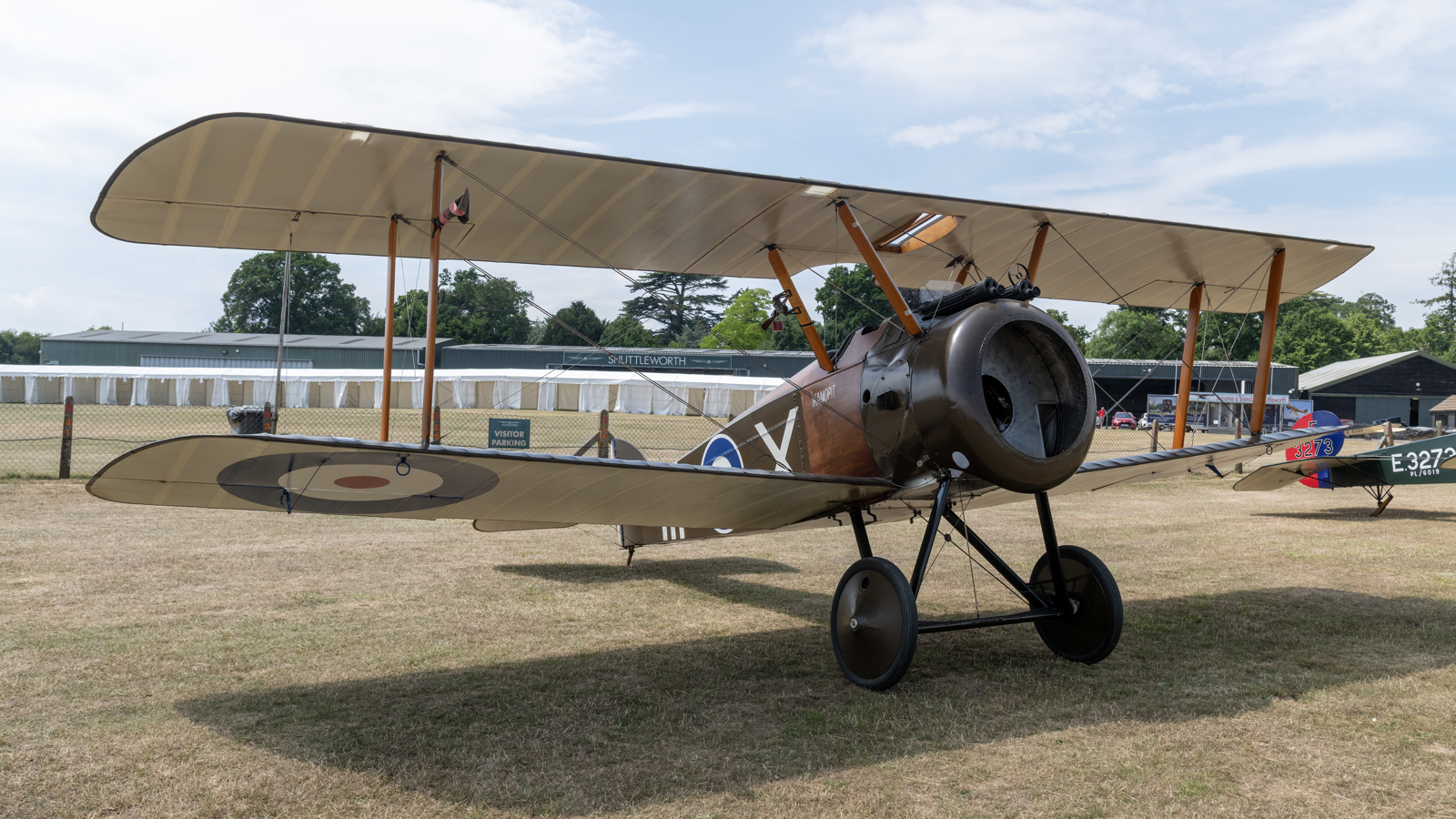Blackburn B2
The Blackburn B-2 was developed as a successor to the Bluebird IV trainer. It has a semi-monocoque all-metal fuselage, instead of metal and fabric, while retaining the side-by-side seating of the earlier aircraft.
Robert Blackburn, OBE, FRAeS (26 March 1885 – 10 September 1955) founded the Blackburn Aeroplane Company in 1911. In 1914, this became the Blackburn Aeroplane & Motor Company and in 1916 established a new factory at Brough in East Yorkshire. This factory remains part of the BAE Systems Military Air and Information business.
In 1924 “The North Sea Aerial and General Transport Co Ltd” was chosen by the Air Ministry as one of four firms to undertake RAF Reserve pilot training. Advanced training was introduced in 1925 and ab initio training to British and foreign students was offered. The B-2‘s started to arrive in 1932 and by March 1933, utilization exceeded 100 hours per week.
On the outbreak of WW2, the aircraft at Hanworth were moved to Brough, where the two training schools merged, becoming No.4 Elementary Flying Training School. The Brough school continued to be operated by Blackburn, with the aircraft remaining with civilian registrations, although they were repainted with wartime training markings with yellow fuselages, camouflaged wings and RAF roundels.
The remaining aircraft were taken over by the RAF in February 1942, being handed over to the Air Training Corps, where they were used as instructional airframes. At least two aircraft were transferred to the Number 2 School of Technical Training at RAF Cosford.
About this aircraft
Of the 42 aircraft built, just two survived the Second World War. These were first used by the “Brough Flying Club” and then by “North Sea Air Transport Ltd”. A fuselage was for many years seen up a tree in an Essex scrapyard before being rescued in the 1980s. The aircraft displays two identities, G-ACBH and G-ADFO and is preserved, still wearing its original paint, at the South Yorkshire Aircraft Museum near Doncaster.
One crashed in 1951, leaving this aircraft, G-AEBJ, as the sole survivor. It was maintained in airworthy condition by Blackburn (now part of BAE Systems). The aircraft was transferred to the ownership of the Shuttleworth Collection from BAE Systems on 17 March 2022.
Specification
| Title | Detail |
|---|---|
| Type | Two seat biplane |
| Design purpose | Trainer |
| Wingspan | 30ft 2in |
| Overall length | 24ft 3in |
| Weight | 1,175lbs |
| Max speed | 112mph |
| Year | 1936 |
| Manufacturer | Blackburn Aircraft Limited |
| Engine | de Havilland Gipsy Major 1 |
| Engine type | 4-cylinder inline |
| Era | Interwar |
| Status | Collection owned |
| Registration | G-AEBJ |
Other collection items
Register for Updates
Be the first to hear about our latest events and get all the Shuttleworth news

